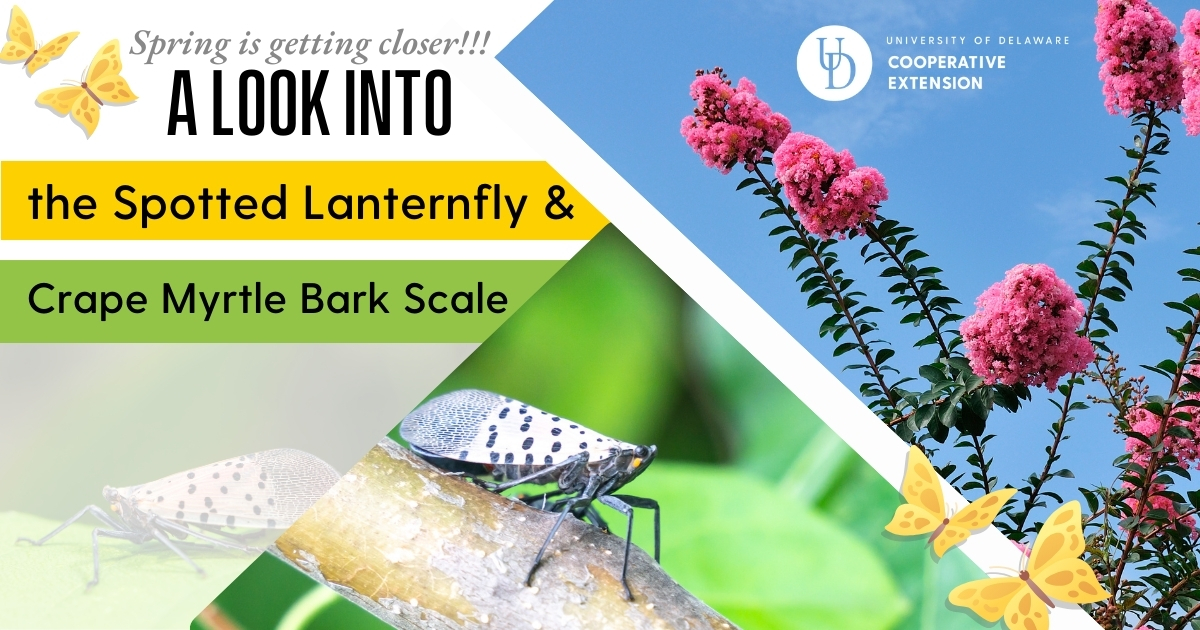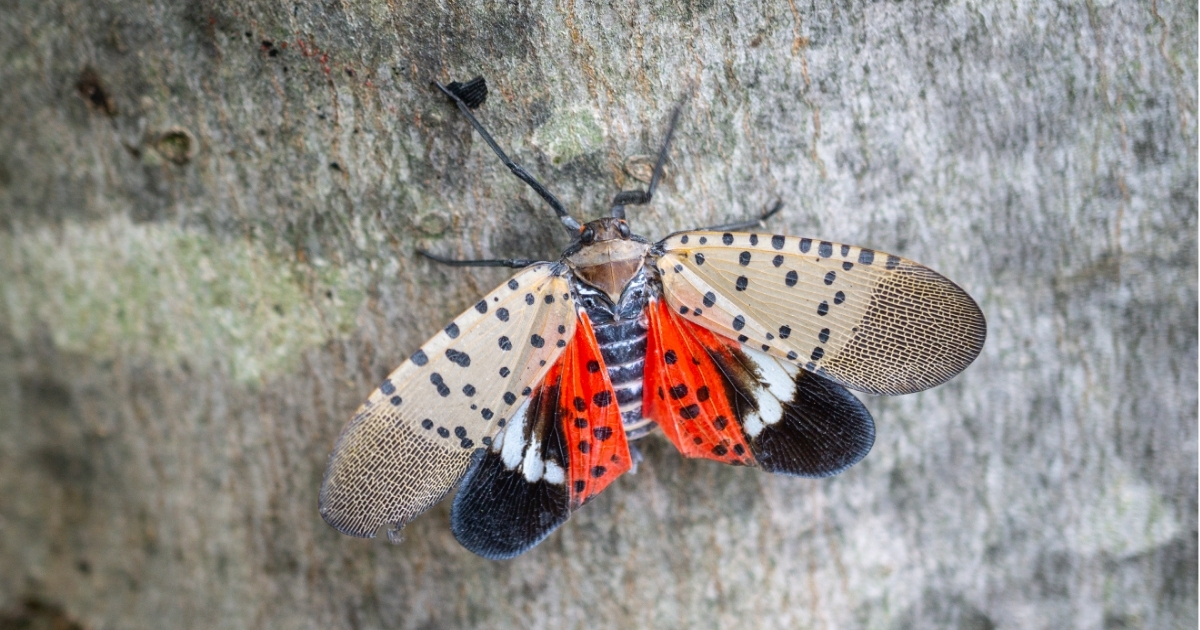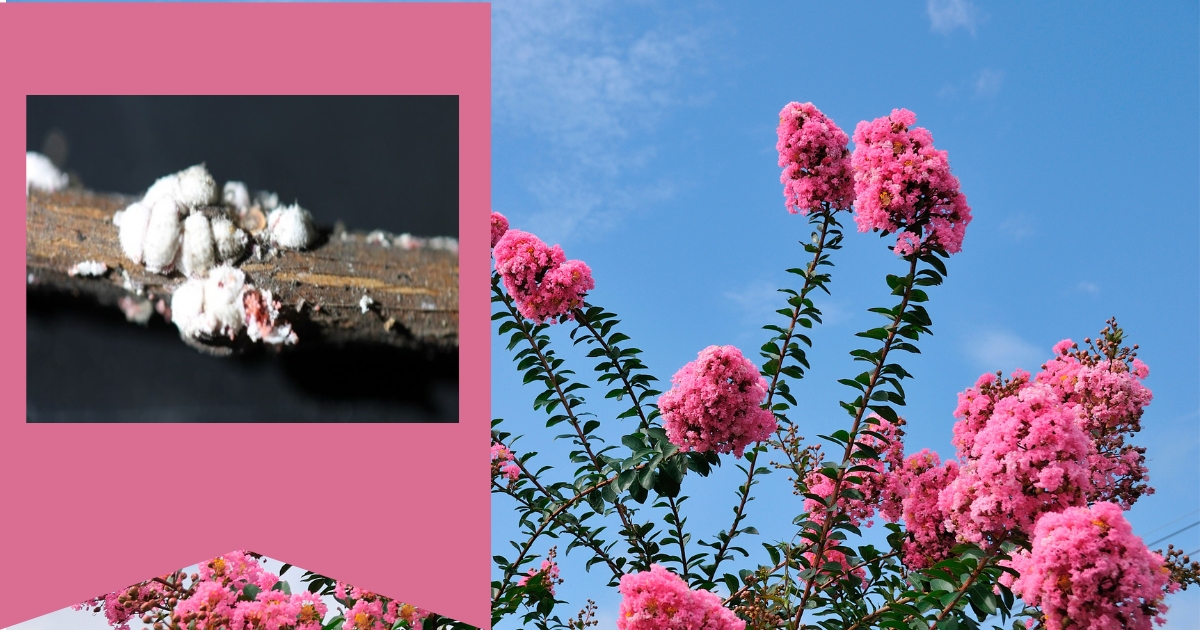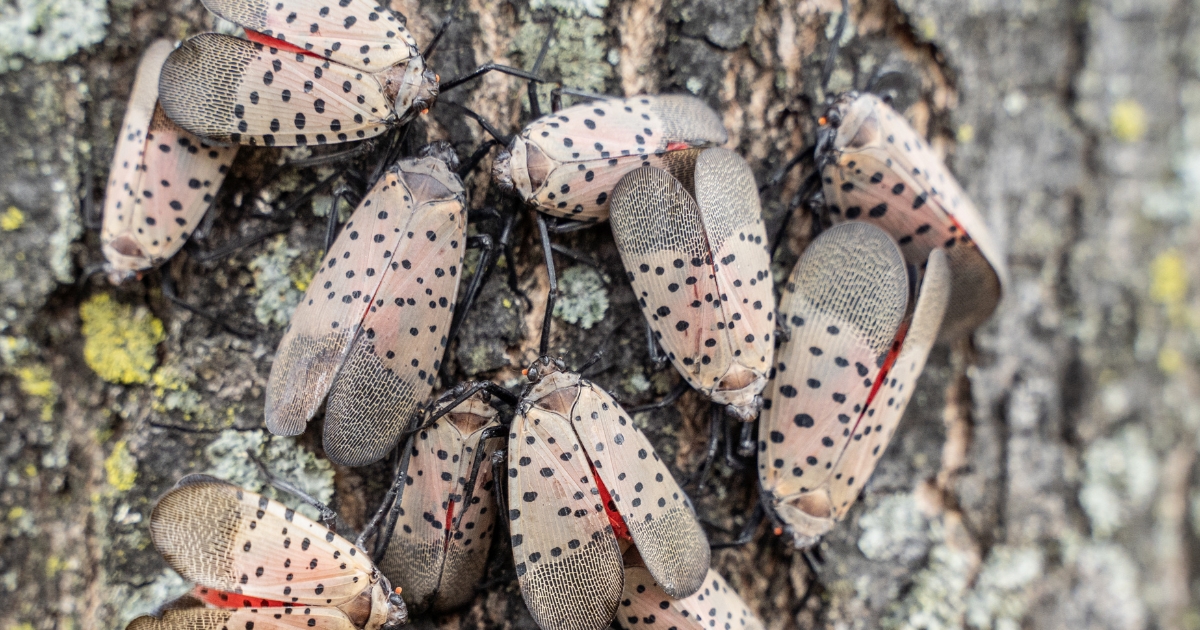
Category: Cooperative Extension

A look into the spotted lanternfly and crape myrtle bark scale.
March 18, 2024 Written by Brian Kunkle, Ornamentals IPM Specialist
Drip, drip, buzz, buzz, time to think of all the rain and bugs because spring is getting closer!!! We should let that soak in a little while so we realize the time for spring planting and the insects associated with them is almost here. We will see a variety of springtime insects such as bumble, honey and carpenter bees; also, aphids, caterpillars, and beetles appear in the landscape. In addition to these common insects, we need to watch for some of the exotic invasive insects relatively new to our area – the spotted lanternfly and crape myrtle bark scale.
The Spotted Lanternfly
The spotted lanternfly is a colorful insect that initially appears black and white polka-dotted and is small; however, by mid-summer, it is turning red and black with white polka-dots and is much larger. This insect becomes a colorful adult by mid-August and feeds until late October to possibly early November. This insect has not caused mortality of landscape trees or shrubs, but the amount of honeydew produced by their feeding can make things underneath the plants they feed on become very sticky and covered with a blackish-gray mold called sooty mold.

Crape Myrtle Bark Scale
Crape myrtle bark scale is a small insect that is amethyst to pink in coloration but covers itself with a white waxy covering for protection. This insect is commonly found in southern Delaware, and although it hasn’t been commonly encountered in New Castle County, it has been found in Pennsylvania. Females lay eggs which hatch sometime in early summer, and this insect stage called a crawler moves to other places on crape myrtles to settle and feed. This insect also has not been documented to kill trees, but it can reduce the crape myrtle’s ability to produce flowers. Additionally, their feeding can cause the trunks of trees to be covered in honeydew and the associated sooty mold, which diminishes the aesthetic value of the plants. Both insects can be managed with systemic insecticides or broad-spectrum insecticides, but these options may have non-intended impacts on arthropod communities. Consequently, the University of Delaware is collaborating with the University of Maryland on research projects focused on the biology or management options targeting these two new pests.

Spotted Lanternflies Project
Our project with spotted lanternflies (Hemiptera: Fulgoridae) has evaluated the efficacy of reduced-risk insecticides, entomopathogenic fungi and new systemic insecticides. These efficacy trials have been conducted in small meadows having Tree of heaven (a favored host plant) or in nurseries on red maples. Collection techniques, refining cages for confining nymphs or adults and application methods have also been investigated while testing various insecticides. The current frequently used systemic insecticides have been implicated in contributing to problems with pollinator populations. Our goal is to find an insecticide that has minimal impact on beneficial arthropods and pollinators. We are also evaluating the use of unmanned aerial vehicles (drones) to make insecticide applications in nurseries. The use of drones should reduce the amount of insecticide applied to a landscape or nursery and enable applicators to reach difficult areas on infested plants (e.g., the upper canopy of extremely tall trees).

Crape Myrtle Bark Scale Project
Crape myrtle bark scale (Hemiptera: Eriococcidae) was initially found in Texas in 2004 and has been found in at least 11 other states since. It was first found in Delaware during the spring of 2020. In the south, there has been some research conducted on this pest, but there has not been any work conducted on this pest in the mid-Atlantic. The same systemic insecticides currently used for spotted lanternflies are successfully used against this pest. Other insecticides are available to manage this pest, but industry professionals need to know when to make the applications to obtain the best results. Our goal is to inform professionals when is the best time to make applications with these alternatives. This project has two study sites, one on the Georgetown campus at the Carvel Research and Education Center and the other at the Central Maryland Research and Education Center in Ellicott City.
We have entomology interns scout crape myrtles planted at these locations every week during the summer, looking for the crawlers of this insect. The scouting technique uses flagging tape to indicate where clear sticky tape is placed, which is near settled female scale insects. The crawlers hatch out of eggs and move onto the tape as they look for places to feed. Interns remove these pieces of tape, bring them into a lab, and inspect them with a dissecting scope. They search the tape for small pink colored insects (crawlers) stuck to the tape and count those that are found. The total found, the day and week, and daily temperatures are recorded so we can calculate accumulated growing degree days. Growing degree days is a unit of measure that tracks how much energy is available for insect development. This measurement is used to correlate crawler activity (the most vulnerable stage) to a time of the growing season when professionals should apply the insecticides. We also document natural enemies found feeding on settled-scale insects. We compiled the information from both locations and shared it with industry professionals in updated fact sheets each year. Future research will evaluate reduced-risk insecticides as alternatives to standard insecticides.
